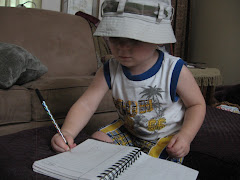1. BIBLIOGRAPHY
Smith, Cynthia Leitich. INDIAN SHOES. Illustrated by Jim Madsen. New York: HarperCollins, 2002. ISBN 0803722761.
2. PLOT SUMMARY
Ray Halfmoon has been living with his Grampa Halfmoon in Chicago since his parents were killed in a tornado when Ray was a baby. This collection of inter-related stories follows Ray and Grampa from one adventure to another, from babysitting the neighborhood’s pets when everyone is gone for Christmas to getting creative with a very bad homemade haircut. Ray loves his grampa, and the stories illuminate their relationship in a way that will make readers wish they had a grampa just like Ray’s.
3. CRITICAL ANALYSIS
Although Ray and his grampa are members of the Seminole-Cherokee Nation, their experiences are universal to any child living in the United States, and the stories will appeal particularly to younger elementary children, many of whom may have helped take care of a friend’s pet, or had an art project ruined by too much water in the paint, or gotten a bad haircut. Each chapter is a separate story about something that has happened in Ray’s life, and how his grampa helps him overcome the obstacles with love, encouragement, and sometimes just by letting Ray figure out what to do on his own. Children will enjoy the fact that something mentioned in one chapter will be mentioned in another, carrying threads of the story along the entire book, making it feel cohesive rather than just like six separate stories. For example, in one chapter, Grampa’s truck has died its final death, and in the next chapter, Ray and Grampa are in Grampa’s new truck. Even “the worst Christmas ever” turns into a beautiful Christmas when Ray and Grampa weather it together.
Cynthia Leitich Smith, a member of the Muscogee (Creek) Nation herself, weaves cultural markers skillfully into the text, making them a natural part of the story without feeling contrived. In one story, Grampa notices a pair of men’s moccasins in a thrift shop, which reminds him of home, and in another, Ray is tucked in bed, cozy under a Cherokee Seven Clans quilt, not willing to crawl out for a pre-dawn fishing trip with his grampa. Each chapter has two or three pencil and paper illustrations that accurately portray descriptions in the text. Ray and his grampa have facial features and coloring that look Native American without becoming stereotypical. Grampa has long dark hair held back in a ponytail, and both Ray and Grampa dress as anyone who lives in Chicago would dress - in jeans, t-shirts, sweaters, sneakers and boots. The relationship between grandfather and grandson is close and nurturing. Even though they do not live on a reservation but rather in a suburban neighborhood, the close multi-generational relationships that exist in Native American families are nicely portrayed between Ray and Grampa.
Although the stories never reveal Ray’s age, the activities he participates in along with the illustrations lead readers to believe that he is six or seven. His age, coupled with the simplicity of the stories and predictable plot structure will appeal to younger elementary readers.
4. REVIEW EXCERPTS
*Publishers Weekly: “Though the author affectingly portrays the strong bond between grandson and grandfather, the narrative bogs down with flowery or overwritten passages (e.g., "Ray's and Grampa's breath puffed cloudy as they trudged next door to the Wang home. In the driveway, Mrs. Wang's VW Bug waited to be freed from the snow like a triceratops skeleton embedded in rock"). Kids may have trouble sticking with this collection.”
*School Library Journal: “There are no mystical nature spirits or cathartic history lessons, only the everyday challenges common to any contemporary kid, as experienced by an Indian boy who is firmly grounded in his own family's heritage. With its unadorned portrayal of urban Indian life, Shoes is a good book for any elementary-aged reluctant reader, and a necessity for indigenous children everywhere.”
*Booklist: “The stories' strength lies in their powerful, poignant evocation of a cross-generational bond and in the description of the simple pleasures two charming characters enjoy.”
*Kirkus: “A very pleasing first-chapter book from its funny and tender opening salvo to its heartwarming closer. . . . An excellent choice for younger readers from the author of the bittersweet Rain Is Not My Indian Name (2001).”
*CCBC (Cooperative Children’s Book Center): “Smith has adroitly woven cultural details about her characters' Seminole-Cherokee heritage into the stories, and uses colloquial language to further enhance this fine collection of brief contemporary fiction.”
5. CONNECTIONS
• Research Cherokee Seven Clans quilts. What are they? Why are they made? This link shows an example of a Cherokee Seven Clans quilt.
http://museum.msu.edu/museum/tes/thc/exhibit%202.htm
Create a class quilt with blocks that represent the countries or nations that the students ancestors are from.
• Ray negotiates for the moccasins for his grampa because he understands that the moccasins represent “home.” Have children think about what represents home to them – what objects in their house are important to their parents?
• Have children find out what is in their homes that represent their ancestry. Perhaps have a show-and-tell time where children can bring something that is reflective of their family’s heritage.
GUEST POST: Chris Baron on SPARK
7 months ago



No comments:
Post a Comment